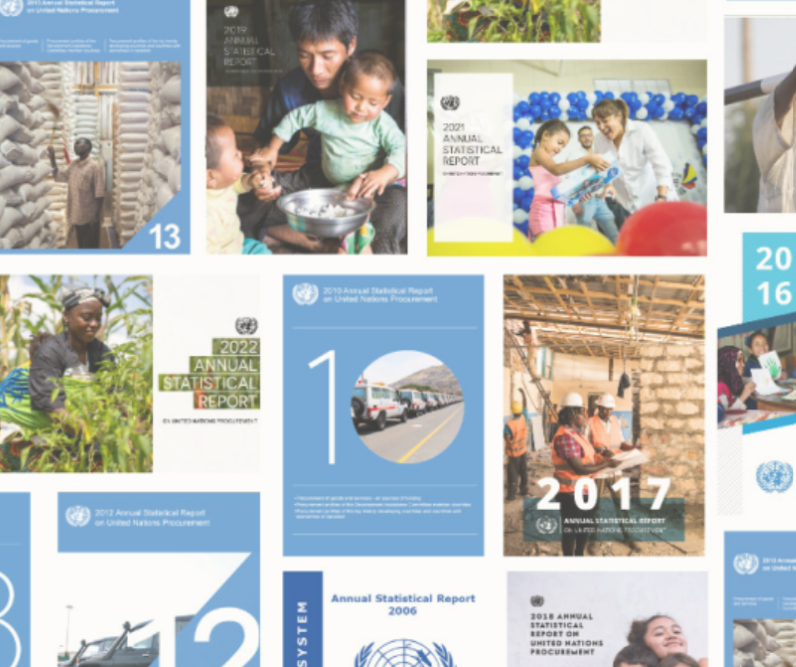Annual Statistical Report on UN Procurement
-
The Annual Statistical Report on United Nations Procurement is produced by UNOPS on behalf of the United Nations.
More information about the methodology and history of UN procurement statistics.
Having trouble viewing a dashboard? Give feedback -
UN Procurement Data Portal
UN Procurement
Data PortalThe United Nations procures goods and services from suppliers all over the world to support its activities and operations. Procurement statistics have been collected from organizations in the United Nations system and reported together since 1984 through the Annual Statistical Report on United Nations Procurement (ASR).
This UN Procurement Data portal provides access to the latest procurement statistics, including information on United Nations organizations’ efforts to integrate sustainability considerations into their procurement processes, through interactive data dashboards as well as the report itself.
-
Highlights of UN procurement in 2024
UN procurement reached $25.7 billion in 2024 – a $733 million or 2.9 per cent increase from 2023, and the third-highest annual procurement volume on record. The same 32 UN organizations reported in 2024, ensuring year-on-year consistency. Collaborative procurement continued to grow in 2024, reaching $1.4 billion—up from $1.1 billion in 2023—and accounting for 5.8% of total UN procurement.
Health remained the top sector at $5.3 billion, driven by strong demand for pharmaceuticals, vaccines, and healthcare services. Construction, Engineering and Science held second place at $3.6 billion, supported by major infrastructure and project work. Administration and Operations climbed to third with a record $2.9 billion, reflecting expanded field activities and program scale-up. Humanitarian Aid, Peace, Security and Safety was the fastest-growing sector, up by 22.1 per cent to $915 million, highlighting intensified emergency and peacekeeping efforts.
In 2024, the UN sourced goods and services from suppliers in 222 different countries and territories. UN procurement activities remained stable across regions in 2024, underscoring the global footprint of UN operations. While most regional shares held steady, Latin America and the Caribbean recorded notable growth, with Colombia emerging as the region’s largest supplier.
Asia led with $8.2 billion, accounting for nearly one-third of total procurement, followed closely by Europe at $8.1 billion. Africa remained the third-largest region at $5.1 billion, maintaining a consistent 20 per cent share of global procurement.
Procurement from least developed countries (LDCs) reached $5.0 billion in 2024. Procurement from LLDCs rose slightly to $3.0 billion, while sourcing from SIDS reached a record $799 million — up by 27.4 per cent from 2023.
UN organizations continued to prioritize sustainability in procurement. In 2024, 27 out of 31 organizations reported the inclusion of environmental, social and economic considerations in their procurement. Recognizing the importance of supplier engagement in advancing sustainability, 13 organizations reported collaborating with their suppliers on supply chain sustainability efforts.


